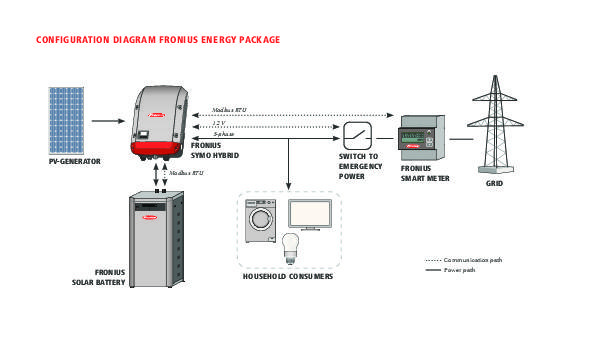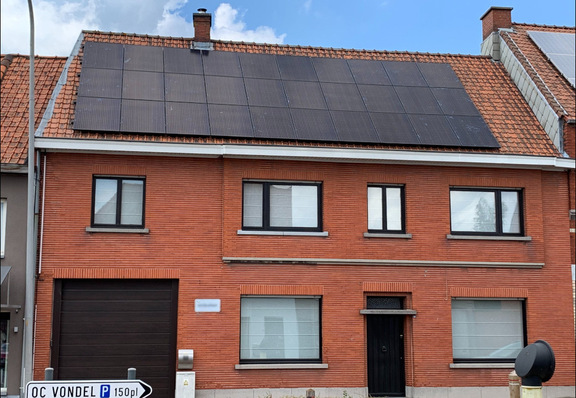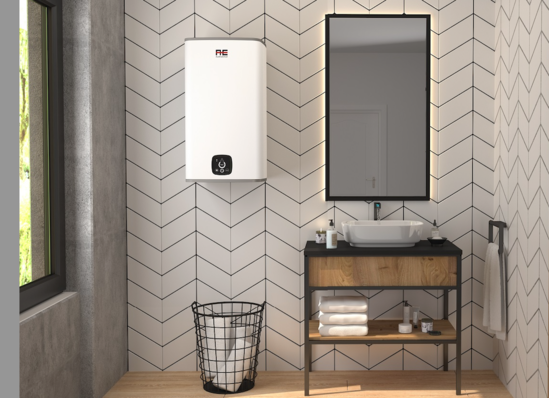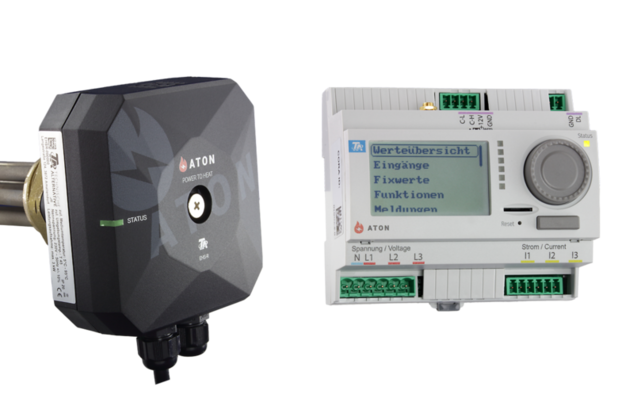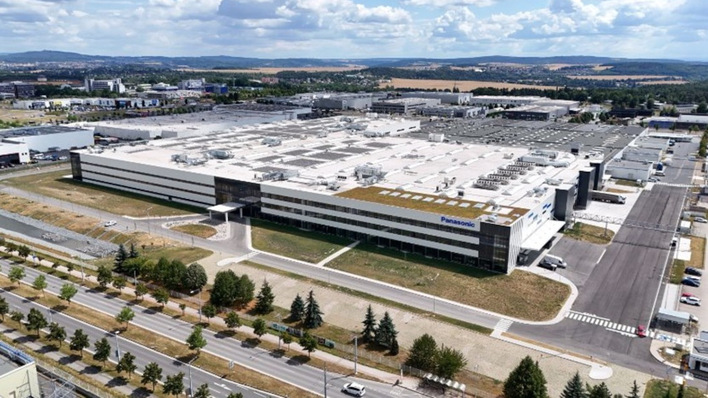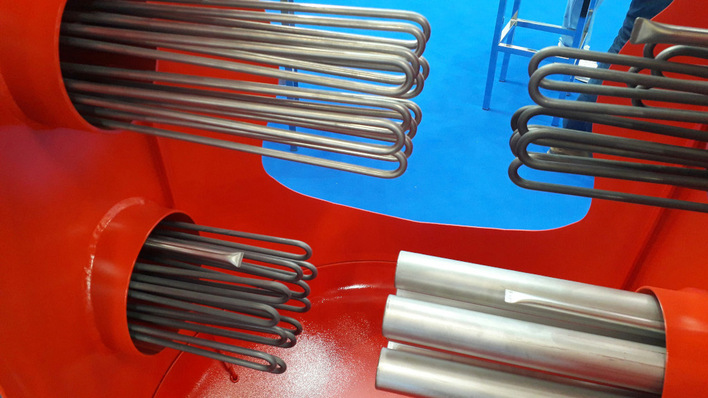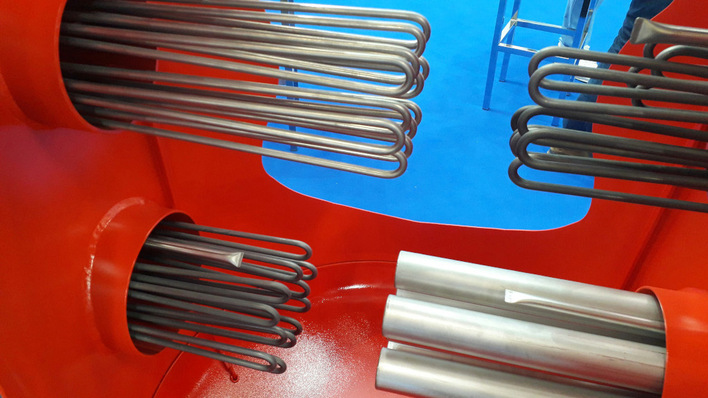Keep up with our latest news, register for our newsletter here.
That means PV: The first generator for the mass market that directly makes use of sunlight will totally revolutionise energy supply – from the ground up. Electricity is a very versatile form of energy. And on top of that it can easily be transported (at least over short distances).
Electricity moves through a conductor independent of the mass flow and can almost infinitely be branched out, rerouted, regulated and controlled. And most of all: It produces power, heat and mobility at the same time. And – a very important point – it can be saved at relatively little expense. In the electricity sector, efficiency technology is far more advanced than in heating technology or particularly in cars with combustion engines.
A word on system efficiency
Compare this to conventional heating technology: Transporting heat is only possible at great expense in material. Water or air usually serve as the transfer media; and moving what can be a large amount of matter requires pumps, which in turn are powered by electricity. Any thermal system has much more inertia in dissipating heat than electrical systems. To avoid losses, tubing needs to be insulated – which any heating engineer knows from bitter experience.
But the greater problem: To bring a room up to 20 degrees Celsius or hot water up to 45 degrees takes a furnace that produces a little under 1,000 degrees. That cannot be the most efficient way, not to mention the emissions. In the automotive sector, the internal combustion engine (roughly 40 percent efficiency) is up against the electric motor (98 percent efficiency).
Electricity is replacing fire
It does not take a prophet to see that in the future humanity’s energy demand will be met with electricity. Because solar and wind power are effectively ubiquitous around the world, technologies using combustion will only play a marginal role in the future. And this transition is already affecting German households: Building services systems suppliers are converting their entire range to electrical components.
Prompted by smart home technologies and the increasing number of electrical consumers in a modern household means that the entire heating sector will have to say a fond farewell to gas heaters and boilers – and even solar-thermal water heaters will only have a place in the refurbishment of existing buildings and in very specialised niches such as commercial businesses with a great just-in-time demand for hot water.
Self-sufficiency already feasible
The Allendorf-based company Viessmann has already recognised this trend early-on. “With photovoltaics, heat pumps and micro-CHP, a house can be practically self-sufficient,” Thomas Oppel of Viessmann Photovoltaik says. Viessmann have an annual turnover of approximately 2.1 billion euros. Their products cover the entire range of building services for all energy sources and applications from one kilowatts to 120 megawatts – from a one family house to industrial applications or housing estates with a local heating network.
Thomas Oppel sees heat pumps (Vitocal) and photovoltaics (Vitovolt) as one of the most efficient systems out there. That said, the heat pump can be connected to a storage unit (Vitocharge). As he says: “Self-sufficiency already feasible.”
Based on an example calculation he shows how the transition to clean energy for a family home can also be a declaration of independence of its inhabitants: A house built in 1991 that has 160 square metres of living space. It had originally been fitted with a gas-fired low-temperature heating system. Electricity used to be supplied by the municipal utility and the family also has a medium-sized car.
Cost savings of more than 70 percent
The heating system consumed 38,800 kilowatt hours per year, that was 2,136 euros. About 3,800 kilowatt hours had to be bought in from the grid at a cost of about 1,045 euros per year. Add to this the running cost of the car at a yearly mileage of 15,000 kilometres: 2,221 euros.
The house was modernised with PV and the three-phase storage unit Vitocharge. Furthermore, there was micro-CHP: The cogeneration unit Vitotwin combines a small power unit (one kilowatt electrical output, 5.3 kilowatts thermal output) with a condensing boiler running on liquefied gas (six to 20 kilowatts thermal output) for peak heating load on really cold winter days. This technology does not require storage, because PV and the cogeneration unit complement each other. In the winter, the gas boiler cuts in to support the heating system.
The building produces so much electricity that it practically covers 93 percent of its own demand. There usually is a surplus of electricity which can be used for charging the electric car. The EV acts as a storage unit for this surplus. The utility costs laid out above are reduced by 70 percent. Any necessary investments are paid off within ten years.
The last straw for heat technology
As yet, Viessmann has been working with micro-cogeneration and gas boilers. But the next generation of useful CHP appliances is right around the corner. The new fuel cells that are being subsidised by the federal government and which are now massively entering the market, will be the last straw for combustion-based technology: They give off little waste heat and work purely as generators.
If PV is prioritised, the fuel cell becomes the tandem generator. Of course, fuel cells still are very expensive, but they will see a similar drop in price as lithium storage units. The global market is currently taking off in a big way. In South Korea and Japan alone, over one hundred thousand fuel cell units were sold. And quantity matters. This segment is subject to the same rules that drive the markets for PV and storage – and EVs.
In such complex building services systems, management is of key importance: It has to quickly react to the supply and demand of electricity in the building, has to direct it to where it is consumed or stored (storage unit, EV) or store it in thermal buffers (storage water heaters, thermal storage units, refrigeration units, cooling technology, ice accumulators).
Competency in systems management counts
The success of these companies depends on their competency when it comes to systems management in building services. Fronius, the Austrian manufacturer of inverters, has realised that early on and integrated much of the self-consumption – and even load – management into their SnapInverters. With Fronius, the inverter becomes a control centre. “Intelligently managing the consumers in the building can reduce the amount of electricity taken from the grid to a minimum,” Hans Pelzer of Fronius explains.
Feeding in solar electricity to the grid is no longer state of the art, especially since connecting a solar generator, at least in Germany, is ‘punished’ by additional charges. On the other hand, selecting particularly suitable consumers and their management is highly crucial. To achieve that, Fronius integrate their own smart metre.
This is not a consumption metre as codified in the Law on the Digitalisation of the Energy Transition, which signals the amount consumed from the grid to the local utility. No, the Fronius Smart Meter brings together all the flows of electricity (consumption and generation). It lets the load management unit within the Symo know when the building intends to draw power from the grid, whereupon the inverter immediately springs into action and takes the necessary amount of electricity out of the Fronius Energy Package, a high-voltage battery.
The brain of the inverter
To make the inverters smarter, Fronius has equipped them with a number of connectors. As standard, these include one digital output (12 volts DC, three watts) for the excess energy signal from the solar array, which allows directly turning on the consumers in the house. Also, six digital inputs are included in order to integrate ripple control receivers. The Modbus RTU (RS 485) makes it possible to connect the Smart Meter. Via an Ethernet connector, the inverter can also be connected to smart home systems.
Increasing self-consumption is also made possible by other components such as the Ohmpilot which redirects surplus electricity from PV or CHP into a water heater, into the buffer of the heating system or into infrared heaters. And of course, the Fronius Solar Battery is also connected to the inverter via the Modbus RTU.
A very efficient way of utilising surplus self-produced electricity is feeding it into a heat pump. Through the inverter’s digital output, the heat pump is instructed to raise the temperature in the buffer reservoir. A charger or wallbox for charging an EV (single-phase, 230 volts) can also be connected. PV can usually not manage fast charging at very high capacity. It favours slow charging with shallow consumption curves. High-performance cogeneration units and even more so fuel cells will soon make it possible to mobilise high outputs for short periods.
The generation patterns of the roof-mounted PV installation tend to be known. The self-learning control unit knows that the peak yields come at noon (if south-facing) or late morning and afternoon (if east- and west-facing). Self-consumption can easily be increased simply using time switches, without even involving the inverter: “Washing machines, dish washers, the water pump of the swimming pool or the air conditioning are typical consumers that can easily be controlled using time switches,” Hans Pelzer recommends. “The pool pump can run for eight hours a day. The air conditioning is switched on just before the residents come home from work.”
Combining PV with a heat pump, the Ohmpilot, smart home technology, an EV, CHP and storage provides a versatile toolbox from which to build the ideal solution for nearly every house. So there is plenty to do for installing companies: Because while the products are already available, it remains to be established how they can be interconnected and adapted to the needs and requirements of the customers. Skilled work at its best. (Heiko Schwarzburger)
To get deeper into business, read here:
Our tips for solar power use: Charge battery first, and then make hot water!
Find useful products for solar generation here.


